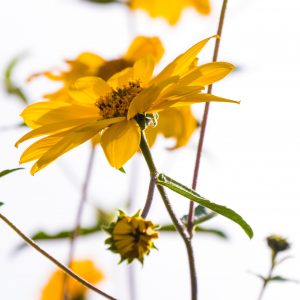It’s Asthma Week (1-7 September), and Asthma Australia is here to help Australians with asthma and hay fever through pollen season. We’ve partnered up with experts in their respective fields to put together helpful and practical information, and pollen apps for each day so you can breathe easier this spring.
Do you experience itchy or watery eyes, itchy throat, runny nose and sneezing from pollen? You might be one of the 2.7 million Australians living with asthma who are suffering from hay fever. If you have asthma, exposure to pollen can make your symptoms worse (it’s the worst, right?).
How can I tell if it’s a high pollen day?
Australia is in the process of building a standardised national pollen monitoring system through the NHMRC AusPollen Partnership Project, but there is still much room for development in our regional areas. Securing funding is still an issue despite the enormous impact pollen has on our community. We know this is important to many people and we’re working on it.
In the meantime, we recommend two fantastic pollen tracking services which provide daily local pollen information via their website and apps that can help you get prepared, depending on where you live:
- For Tasmania or the ACT, download AirRater
- For Brisbane, Melbourne and other parts of Victoria, Sydney and Canberra, download AusPollen. Simply select your local pollen station and then scroll down to the bottom of the page for links to the Apple or Google Play app stores. AusPollen are launching a site in Adelaide from October, when pollen counts officially commence.
Pollen in the air is measured using pollen traps (also called “Burkard” monitors – fancy, we know) which suck in air at a constant rate onto a sticky surface. The pollen gets captured on this surface and can be read under a microscope. The type of pollen can then be identified and counted to determine the concentration of pollen in the air!
AirRater and AusPollen are the only two services that have experts capture and count pollen in this standardised way, so you can breathe easy knowing they are providing you with accurate and reliable information. Also, just a word of caution: pollen forecasts you see elsewhere might not be based on validated information, so take care when looking at pollen information from other sources.
If you launch the app and find out it’s a high pollen day, don’t worry – there is plenty you can do to avoid a flare-up.
How can I prepare and what do I do?
Keeping informed using the pollen count is a great way to minimise your risk. This might mean swapping that run for an indoor workout or having a coffee inside instead of out. The sad reality is that one of the best defences against pollen for people with asthma and hay fever is to avoid exposure by staying indoors, and keeping windows and doors closed. While at home, you might find it helpful to use a recycled air conditioner, and while in the car, close the windows and use the recycled function on the air con. It’s also a good idea to avoid hanging up your washing outside on high pollen days, and instead opt for the dryer or indoor washing line or wash on a different day as pollen particles can stick to clothing.
For school children and outdoor workers, this can be tough.
We recommend you talk with your employer or school now, before pollen gets the better of you, to see what arrangements you can come to. You may be able to swap duties onsite and be indoors on high pollen days. Your school might let you stay in the library during lunch. There are options, so we encourage you to explore them! Most of all, ensure your employer and school are aware of your or your child’s asthma.
We also know the most important approach to managing and preventing asthma symptoms during spring involves using an appropriate inhaled preventer medicine. Asthma preventer medicines need to be used for around two to three weeks before they are effective at preventing symptoms and reducing sensitivity to triggers like pollen so if you aren’t already using one, the time to start is now. If prescribed a preventer, it needs to be used daily, and as prescribed, to maintain the anti-inflammatory benefit.
What the experts say
We want to help you to live freely this pollen season, so we went one step further and consulted with the pollen experts at AirRater and AusPollen to find out the best steps you can take to breathe easy.
“If you know pollen is a trigger for your asthma, make sure you see your healthcare professional at the start of pollen season to talk about how hay fever might impact you and your asthma. By making sure your asthma is well controlled and you are taking the right medications, you will be able to reduce the chance you will have a poor reaction to pollen.” says Dr Penelope Jones from University of Tasmania and AirRater.
Professor Janet Davies from Queensland University of Technology and AusPollen, agrees, adding: “the Australasian Society for Clinical Immunology and Allergy recommends that during the grass pollen season, which is mostly spring in southern states and extends through Summer and Autumn in northern NSW and QLD, people allergic to grass pollen should take preventative medications such as intranasal corticosteroids if they suffer hay fever, or inhaled corticosteroids for those with asthma.”
There’s plenty more you can do. Keep an eye on our blog this week for more tips and tricks!
We are very thankful to Dr Penelope Jones from University of Tasmania and AirRater and Professor Janet Davies from Queensland University of Technology and AusPollen for their advice and assistance with the development of this guide.
Asthma Australia represents and supports the 2.7 million Australians living with asthma. To speak with an Asthma Educator call 1800 ASTHMA (1800 278 462).





 1800 278 462
1800 278 462



